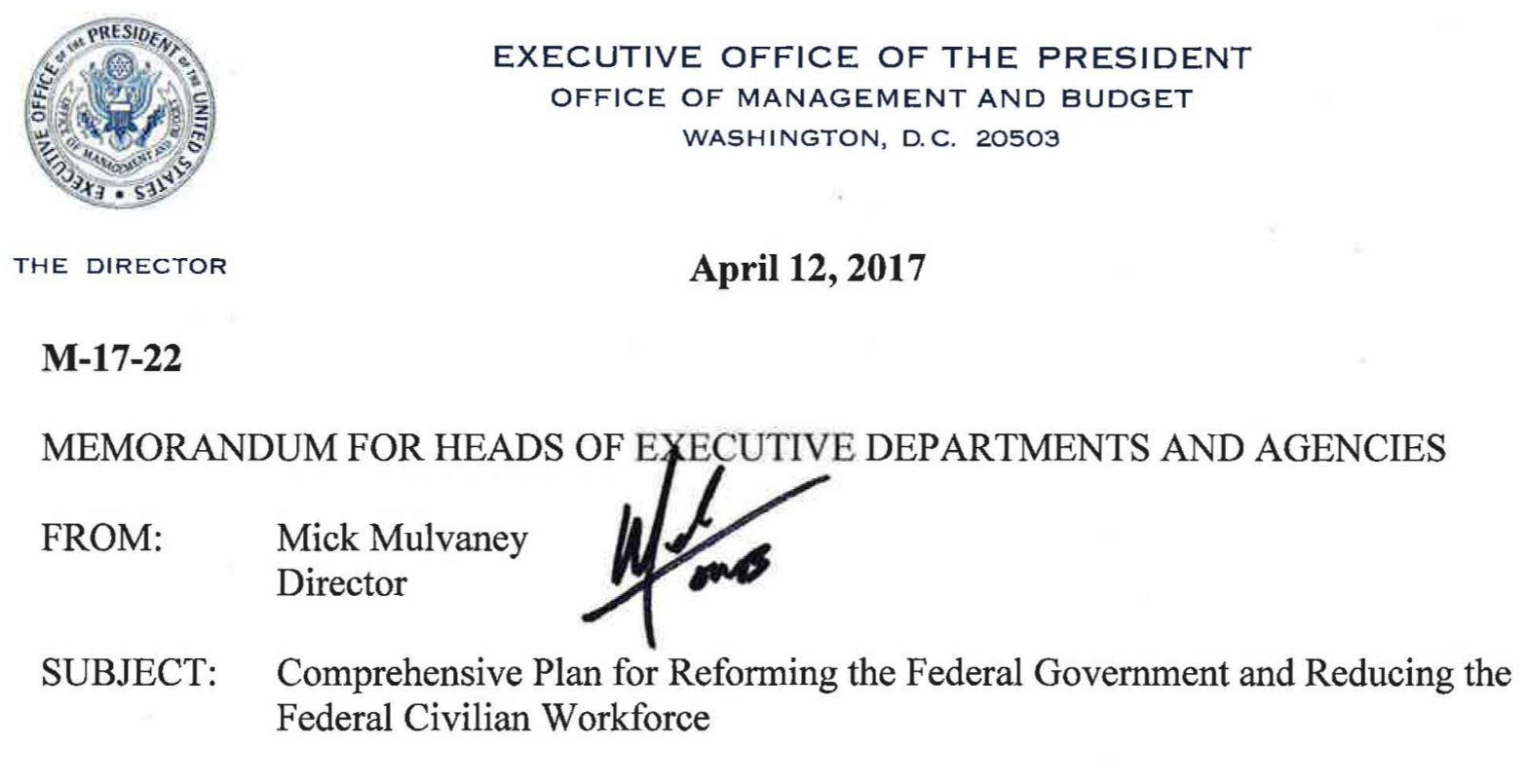How Federal Agencies Can Achieve “Must-Do” Performance Objectives

A memo released this month from the Office of Management and Budget (OMB) has emerged as Topic A within federal personnel departments: In providing guidance to satisfy the requirements of President Trump’s hiring freeze and reorganization, the 14-page document calls for agencies to adopt policies and practices which will increase efficiencies, eliminate duplicative and non-essential functions, improve information-sharing and more effectively deploy and consolidate technology.
Among its core mandates, the memo requires agencies to “develop a plan to maximize employee performance by June 30, 2017.” As part of this, HR and management teams “should also ensure that performance expectations are appropriately rigorous (and) aligned to the work that needs to be done — regular, ongoing performance feedback should be provided. Moreover, agencies should ensure that managers have the tools and support they need to manage performance effectively to achieve high-quality results for the American people.”
Free Download: OMB Reform & Workforce Reduction Agency Action Plan Guide
The memo further states that the OMB will conduct “performance tracking and (evaluate the) accountability” of reform efforts as directed by the memo “through the Federal Performance Framework, including on Performance.gov. This will include periodic progress updates from agencies and oversight by the President’s Management Council.” (More information will be “forthcoming” about the specific tracking methods, according to the memo.)
Clearly, Chief Human Capital Officers (CHCOs) need to immediately focus on maximizing performance. At Acendre, we’ve come up with an in-depth guide, our “OMB Reform & Workforce Reduction: Agency Action Plan Guide,” which explains how to meet this goal. Among the “must do’s” summarized in the guide:
Require regular performance reviews. This should not only include the traditional annual review, but less formal but more frequent feedback opportunities as well. Managers need to engage staffers in a continuous conversation about accomplishments and improvement areas. In turn, they must seek input from employees about what processes, tools, etc. will enable them to best do their jobs – a two-way discussion that will lead to the most productive outcomes.
Utilize performance management data. Through analytics solutions, you quickly identify and recognize high performers and those who are struggling. Then, the solutions will help you develop best practices and “lessons learned,” to launch an enterprise-wide performance improvement program. With analytics, you not only drive toward the “what” of employee contributions – which staffers are excelling and how are they measurably helping achieve mission objectives? – but the “why,” i.e. are these successful staffers getting more training than their counterparts? Are they recruited from a particular school or schools? Are there specific shared skillsets in their background/work history? Are there any positive distinctions as to how they are onboarded?
Invest in better tech. Agencies should take advantage of available tech to migrate appraisals from paper format to online portals, so authorized users/supervisors instantly access and analyze the results, and then make good decisions based upon their conclusions. If they discover, for example, that a particular group of employees from the same office have suddenly seen a sharp decline in their review assessments after a string of good appraisals, they can deploy analytics to find out what’s changed in that area which could have negatively influenced performances, and then take corrective action.
At Acendre, we realize that sweeping mandates issued in memos such as the OMB’s can ignite an initial “shudder and shock” in Washington. But, after everyone has had a chance to catch their collective breath and study the directives in more detail, it’s clear that objectives here are universally sought: to make government work better by doing better work. We constantly collaborate with agencies toward this goal, helping them gain unique and previously unavailable visibility into all functions which impact the recruiting, onboarding, training and engaging of employees. If this sounds like something you’d like to discuss, then let’s talk.
Follow Joe Abusamra on Twitter - @JoeAbusamra
Follow Acendre on Twitter - @AcendreTalent
Back To List